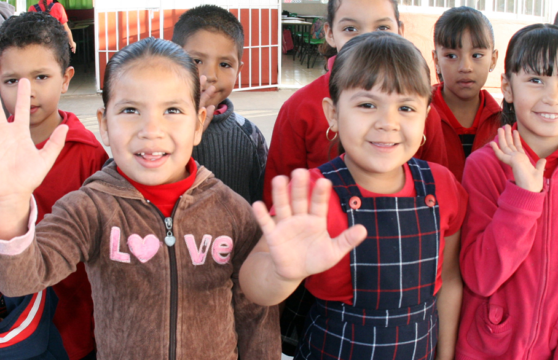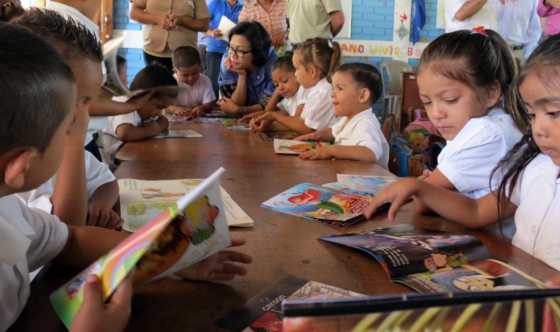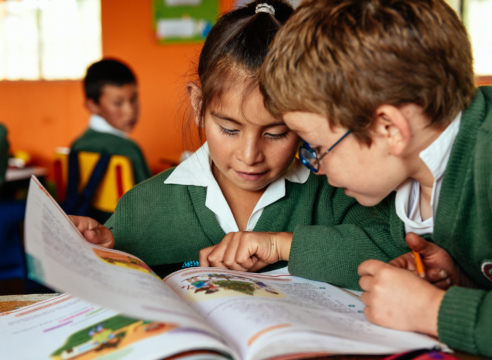
No One Is Prophet in His Own Land
What is the Escuela Nueva program and how is it effective?
This post is also available in: Spanish
There are many reasons why and ways in which partnerships between the public and private sectors can benefit education programs. The sheer scale of the challenge to improve the quality of education justifies the need to collaborate. Additionally, more than just working in parallel towards a common goal, the two sectors complement each other. Evidence shows that public-private partnerships (PPP) in education can increase program efficiency and transparency of public expenditures, improve service delivery, especially to underserved populations, permit quicker responses and overcome public sector restrictions. This includes not just government partnerships contracting with private sector entities but also collaborating with NGOs to improve the quality of education services.
The benefits of public-private partnerships for education can best be illustrated in two examples of successful program implementation of the Escuela Nueva model in the Caldas department of Colombia[1]. Both cases illustrate how the private sector has been instrumental in keeping a successful program going. Finally, the main lessons from these two experiences will confirm the value-added from public-private partnerships. The examples presented in this blog post share the following characteristics: (i) public and private institutions work together for a specific purpose and all partners agree on the objective, even though they all may have different interests within that objective; (ii) each partner invests according to its capacities (whether capital, expertise, etc.); (iii) all partners are equal; and (iv) all partners share responsibility for the outcome. Additionally, and by design, the partnership attempts to raise the quality of public education by furthering values such as continuity, flexibility, funding, efficient management and neutralization of local political interests.
In Manizales, the capital city of Caldas, Colombia, the Luker Foundation and local government have entered into a public-private partnership to deliver an adaptation of the Escuela Nueva model designed for urban schools[2] to 38 percent of the public secondary institutions. In 2002, with the financial and technical support of the Foundation, the city launched the Urban Active School (UAE) as a response to concerns over low internal efficiency indicators.[3] The UAE focuses on teaching that guides students based on their individual needs and learning rhythms, strengthening school management and creating ties with the community. The quality of these schools was confirmed with data from the 2012 PISA exam when Manizales obtained the highest score among the four Colombian cities that participated in the tests (Bogotá, Cali and Medellín were the other cities).[4]
In the same department of Caldas, the Committee of Coffee Growers has the mission to improve the standard of living of coffee growers, 96 percent of whom are farmers without much formal education and who work small, traditional farms of about 1.5 hectares.[5] The Committee has experience working in partnership with the departmental government in several sectors, including health, infrastructure, and food security, and contributes to the financing, technical assistance and overall coordination of each project. As with the Luker Foundation, it does not replace the government as the service provider but helps augment the services by providing key insights and resources. The Committee does not partner with the local government for purely philanthropic reasons, but because they believe that in the 21st century, traditional farming will no longer be competitive without a larger and better-educated generation of coffee growers who can increase productivity, adopt new technology, be more competitive, and contribute to the construction of a peaceful society. As a result of their support to the education sector, the Committee of Coffee Growers has more than doubled average education from about 3.5 years to around eight years in one generation. This is good news for the region as a whole, since a correlation between education and productivity has been found. Furthermore, within Caldas, rural public education, which follows the EN model, produces better outcomes than public education in the department, including not only improved cognitive achievement, but more cost-effective ways to achieve this (AED 2010).
Whether a policy maker, school principal, civil society representative, teacher, parent or student, these experiences from Colombia offer readers an overview of the type of PPP that have the potential to improve delivery of education services. These two cases illustrate how PPP can help governments face challenges in financing, implementing and maintaining quality education services, especially for students in low-income families. When moving forward with PPP, several key concepts should be kept in mind:
Regional (Caldas) and local (Manizales) governments are willing to explore possibilities for collaboration with potential partners from the private sector aimed at producing better results. The two successful cases discussed above clearly indicate that public-private partnerships need to be promoted more in Latin America and elsewhere, since they can help governments improve and expand education services for all learners.
Academy for Educational Development (2010). Evaluation of Education Programs Developed by the Public and Private Alliance Between the Coffee Growers Committee of Caldas and the State Government of Caldas Colombia (2010). Audrey Moore, Ana Flórez and Eva Grajeda. Washington DC. https://eric.ed.gov/?id=ED537470.
“Formación Para El Desarrollo.” Fundación Luker. Accessed September 30, 2019. https://fundacionluker.org.co/en/home/.
Puryear, J., F. Barrera-Osorio and M. Cortelezzi. Escuela Activa Urbana Promotes Non-cognitive Learning, PREAL Blog November 5, 2014. https://www.thedialogue.org/blogs/2014/11/escuela-activa-urbana-promotes-non-cognitive-learning/.
Vélez, E. PISA 2012: Some good news for Colombia. PREAL Blog January 28, 2014. https://www.thedialogue.org/blogs/2014/01/pisa-2012-some-good-news-from-colombia/.
What is the Escuela Nueva program and how is it effective?
Despite Escuela Nueva’s massive success and proven effectiveness, the model remains largely under-exploited in Latin America.
There is wide empirical evidence that the Escuela Nueva (EN) model improves educational outcomes. Despite its proven effectiveness, the complete model has only been implemented in a few cases, and almost always for short periods of time. Why is this the case?

